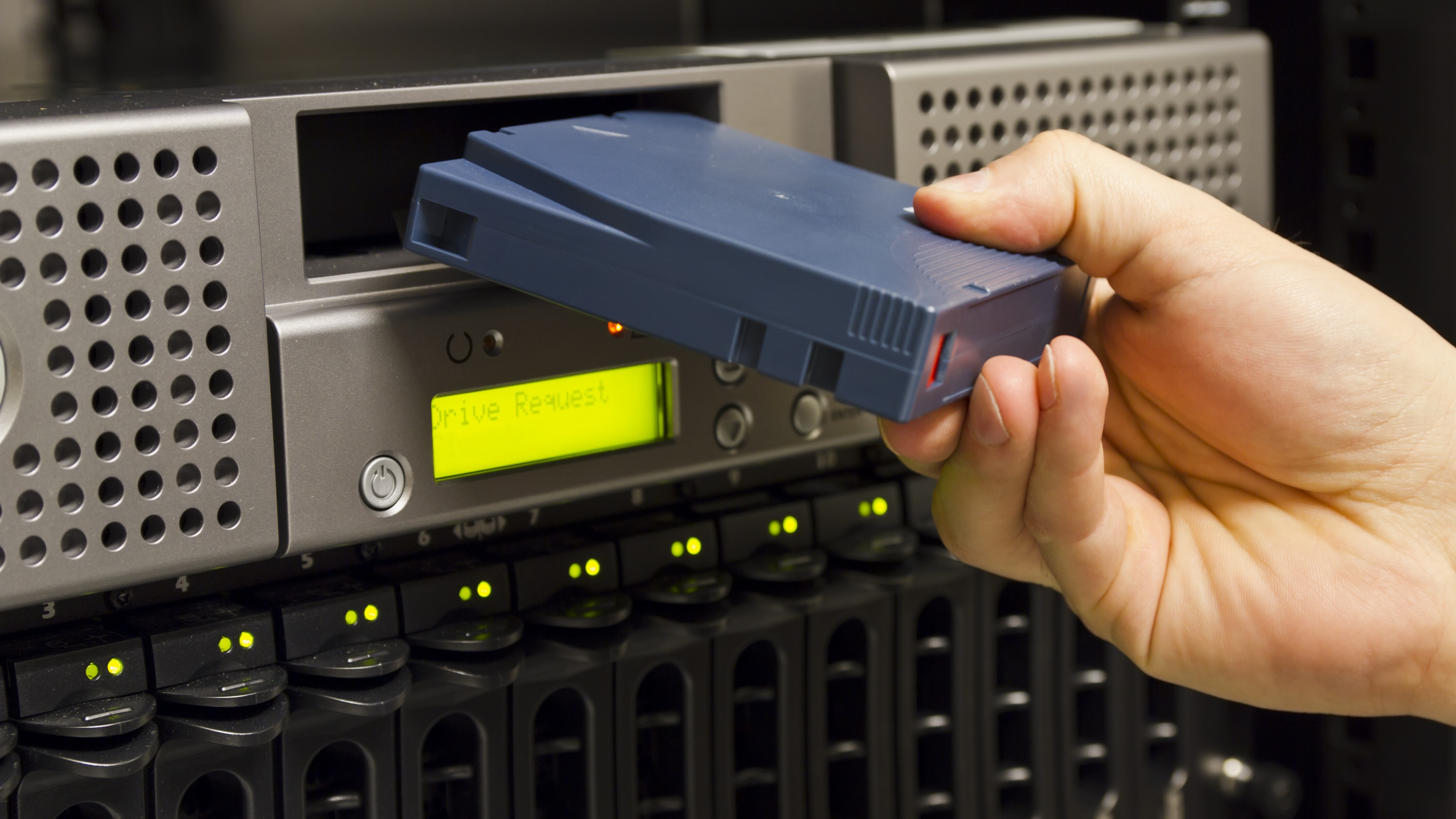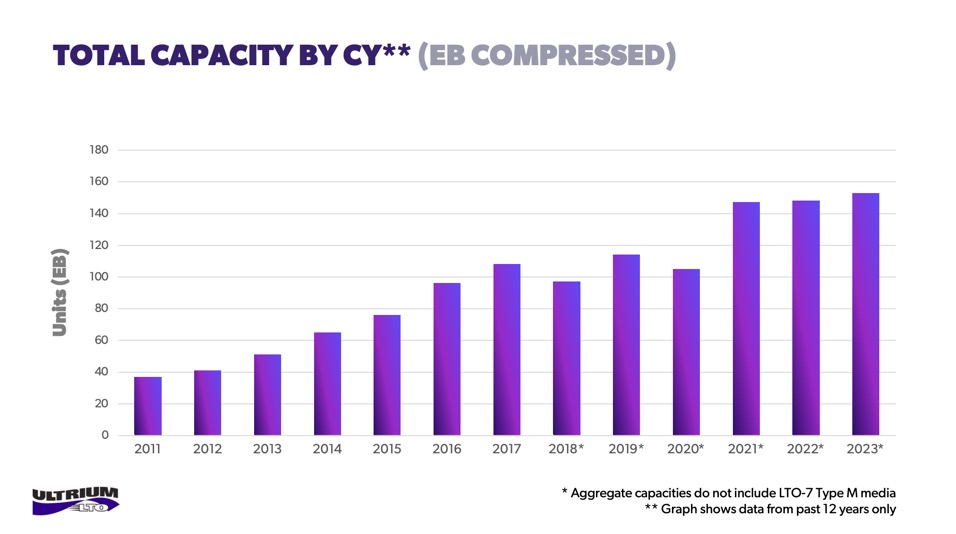Tape shipments increased to 152.9 exabytes in 2023 — not bad for a ’dead’ storage medium
Rumors of magnetic tape’s death have been greatly exaggerated.

Magnetic tape is supposed to be dead as a digital storage medium. However, the people and organizations who use it apparently never got that memo. Manufacturers behind the Linear Tape-Open (standard) shipped 152.9 exabytes of magnetic tape capacity (compressed) in 2023. That’s actually 3.14 percent greater capacity than in 2022.
The three remaining LTO Program Technology Partners, HPE, IBM, and Quantum, provided the details in The Annual LTO Program Media Shipment Report. Some of that growth between 2022 and 2023 was attributed to “rapid data generation and the increased infrastructure requirements of hyperscalers and enterprises.” In other words, AI storage requirements.
When I began working in the computer industry in the mid-1990s, magnetic tape was thought to be on its way out as a digital storage medium. Zip drives were fading from the consumer market, and external hard drives were supposed to replace LTO tape for backup and archival purposes.
It looks like those newer technologies never sent magnetic tape to its grave, though. There are several reasons for this. Tape has a huge capacity, and taking it offline is easy. It’s also quite durable, and experience has shown the media can safely protect data for up to 30 years. Its proponents highly recommend tape for storing data that doesn’t need to be accessed very often.
For archival purposes and backups, tape can often be less expensive than disk drives, even the old-school rotational ones. It’s easily stored and kept safe from potential ransomware infections - working as cold storage. In terms of environmental concerns, research has shown tape storage is less polluting than HDDs and SSDs, too.
The major drawback is the reason tape is recommended only for data you don’t need to access very often. Access and restoral from a tape backup sometimes feels like it takes forever.
How does the amount of tape capacity shipped compare to hard drive capacity? We don’t have exact figures, but consider it like night and day. Seagate alone shipped 99 exabytes worth of hard drives just in the third quarter of 2024, and it is only one hard disk maker of many.
Get Tom's Hardware's best news and in-depth reviews, straight to your inbox.

Jeff Butts has been covering tech news for more than a decade, and his IT experience predates the internet. Yes, he remembers when 9600 baud was “fast.” He especially enjoys covering DIY and Maker topics, along with anything on the bleeding edge of technology.
-
Evildead_666 I managed to swag an LTO5 drive a few years ago, and use it for backups of my nas.Reply
Cheap long term storage for 1.5TB per tape.
I wish magneto optical had stayed around though.
Just as durable, if not better than tape. -
bit_user I wonder how much of this is really due to the speed bump HDDs have seemed to hit in their capacity ramp. It seemed like CRM had run out of steam, SMR isn't a well you can keep going back to, and the EAMR transition has been beset with problems and delays.Reply -
bit_user Reply
What about rewritable optical? For short-term backups, those would seem to be an attractive option. Sure, it has the same capacity problems as write-once optical disc formats, but at least you're not generating landfill waste as quickly.Evildead_666 said:I wish magneto optical had stayed around though.
Just as durable, if not better than tape. -
edzieba Whilst EB shipped has remained flat over the last 3 years, LTO-9 released in that timeframe so number of tapes shipped would have decreased (and even without LTO-9, tailoff in legacy tape shipments would also impact unit volumes shipped for same overall bits shipped).Reply
Sony's Optical Disc Archive was exactly this, though they discontinued the lineup last year (discpacks are still available though). The system was based on cartridges contain multiple double-sided quad-layer BD discs, for up to 5.5TB per cartridge.bit_user said:What about rewritable optical? For short-term backups, those would seem to be an attractive option. Sure, it has the same capacity problems as write-once optical disc formats, but at least you're not generating landfill waste as quickly.
